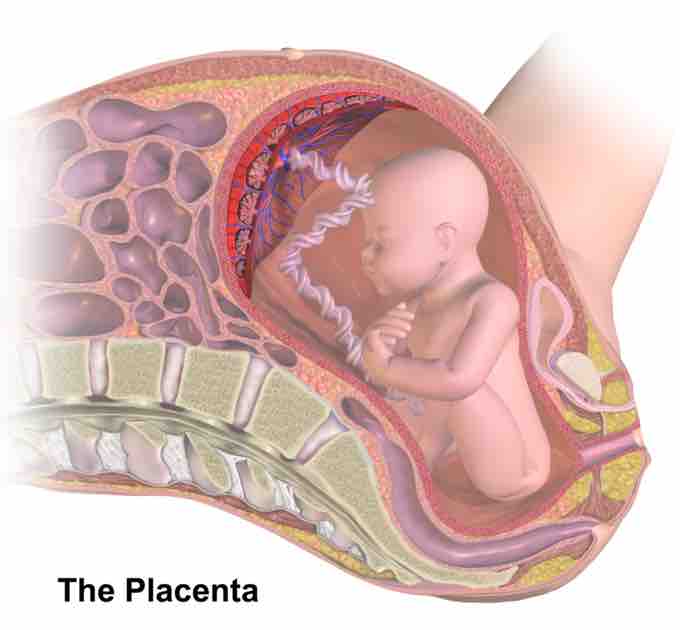Chorionic Villi
Chorionic villi sprout from the chorion after their rapid proliferation in order to give a maximum area of contact with the maternal blood. These villi invade and destroy the uterine decidua while at the same time they absorb nutritive materials from it to support the growth of the embryo .

Chorionic artery
An image showing the chorionic villi and the maternal vessels.
During the primary stage (the end of fourth week), the chorionic villi are small, nonvascular, and contain only the trophoblast. During the secondary stage (the fifth week), the villi increase in size and ramify, while the mesoderm grows into them; at this point the villi contain trophoblast and mesoderm.
During the tertiary stage (fifth to sixth week), the branches of the umbilical vessels grow into the mesoderm; in this way, the chorionic villi are vascularized. At this point, the villi contain trophoblast, mesoderm, and blood vessels.
Embryonic blood is carried to the villi by the branches of the umbilical arteries. After circulating through the capillaries of the villi, it is returned to the embryo by the umbilical veins. Chorionic villi are vital in pregnancy from a histomorphologic perspective and are, by definition, products of conception.
Placenta
The placenta is a fetally derived organ that connects the developing fetus to the uterine wall to allow nutrient uptake, waste elimination, and gas exchange via the mother's blood supply. The placenta begins to develop upon implantation of the blastocyst into the maternal endometrium.
The placenta functions as a fetomaternal organ with two components: the fetal placenta (chorion frondosum), which develops from the same blastocyst that forms the fetus; and the maternal placenta (decidua basalis), which develops from the maternal uterine tissue.
The outer layer of the blastocyst becomes the trophoblast, which forms the outer layer of the placenta. This layer is divided into two further layers: the underlying cytotrophoblast layer and the overlying syncytiotrophoblast layer.
The latter is a multinucleated, continuous cell layer that covers the surface of the placenta. It forms as a result of the differentiation and fusion of the underlying cytotrophoblast cells, a process that continues throughout placental development. The syncytiotrophoblast (otherwise known as syncytium) thereby contributes to the barrier function of the placenta.

Placenta
Image illustrating the placenta and chorionic villi. The umbilical cord is seen connected to the fetus and the placenta.